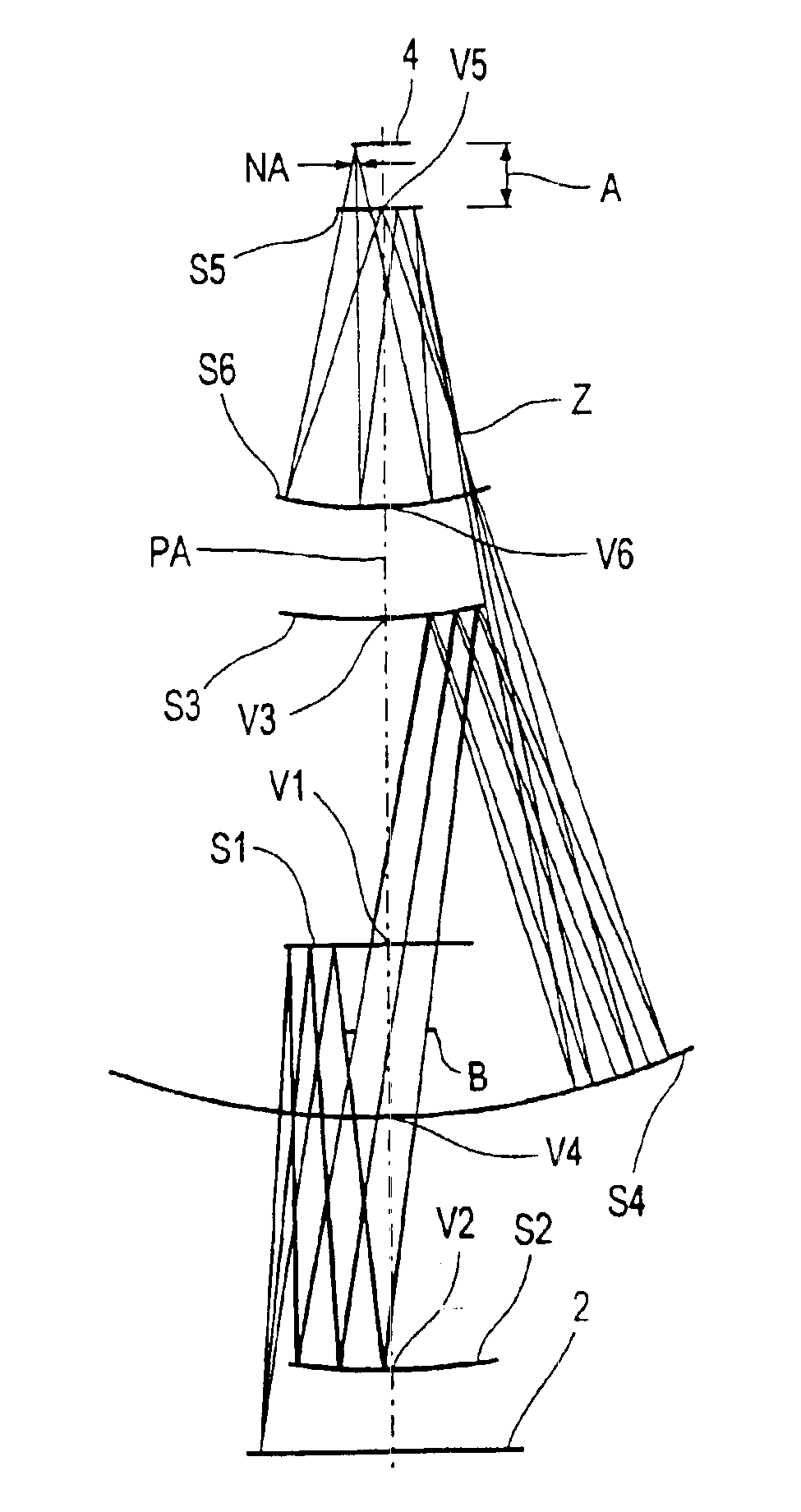Microlithography reduction objective and projection exposure apparatus
a technology of projection exposure and microlithography, which is applied in the direction of mountings, optics, instruments, etc., can solve the problems of inability to achieve the incidence angle and the short distance between the wafer and the mirror arranged next to the wafer, and the instability of thin mirrors, etc., to achieve the effect of efficient masking of undesired light, easy manufacturing and mechanical achievemen
- Summary
- Abstract
- Description
- Claims
- Application Information
AI Technical Summary
Benefits of technology
Problems solved by technology
Method used
Image
Examples
Embodiment Construction
[0038]In FIG. 1 the object field 1100 of a projection exposure apparatus in the object plane of the projection objective according to the invention is shown. The object plane is imaged by means of the projection objective in an image plane, in which a light sensitive object, for example a wafer with a light sensitive material is arranged. The image field in the image plane has the same shape as the object field. The object (or the image) field 1100 has the configuration of a segment of a ring field, and the ring field has an axis of symmetry 1200.
[0039]In addition the axis 1200 extending to the object plane, the x-axis and the y-axis are depicted. As can be seen from FIG. 1, the axis of symmetry 1200 of the ring field runs in the direction of the y-axis. At the same time the y-axis coincides with the scanning direction of an projection exposure apparatus, which is designed as a ring field scanner. The x-direction is thus the direction that stands perpendicular to the scanning direct...
PUM
| Property | Measurement | Unit |
|---|---|---|
| length | aaaaa | aaaaa |
| length | aaaaa | aaaaa |
| wavelengths | aaaaa | aaaaa |
Abstract
Description
Claims
Application Information
 Login to View More
Login to View More - R&D
- Intellectual Property
- Life Sciences
- Materials
- Tech Scout
- Unparalleled Data Quality
- Higher Quality Content
- 60% Fewer Hallucinations
Browse by: Latest US Patents, China's latest patents, Technical Efficacy Thesaurus, Application Domain, Technology Topic, Popular Technical Reports.
© 2025 PatSnap. All rights reserved.Legal|Privacy policy|Modern Slavery Act Transparency Statement|Sitemap|About US| Contact US: help@patsnap.com



